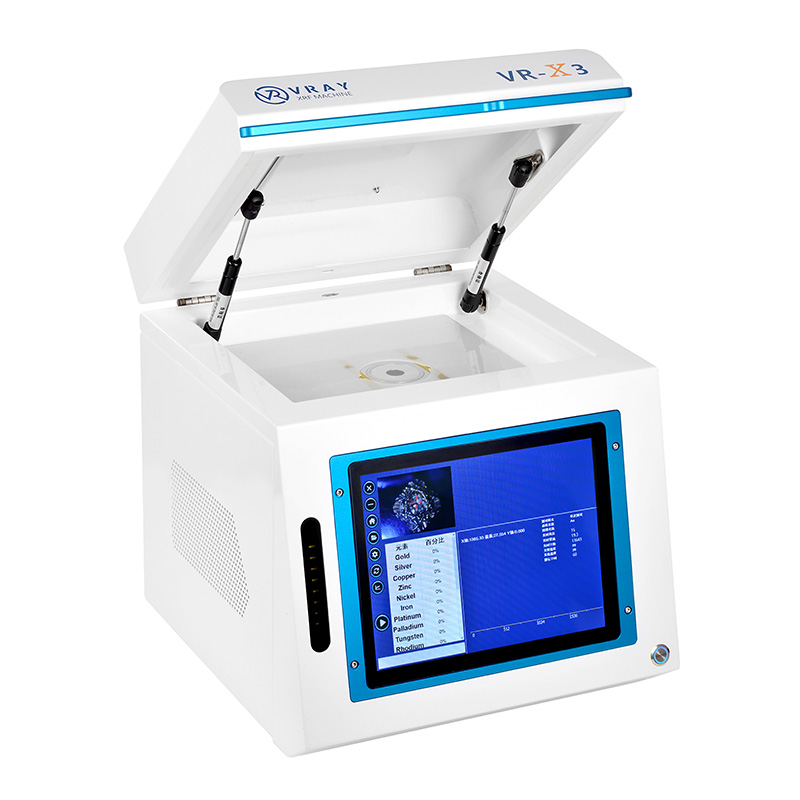Watch the video below to learn XRF analyzer price by VRAY
VRAY offers a diverse range of gold testers, XRF analyzers, precious metal analyzers, and XRF spectrometers to meet every need and budget. Our models span a price spectrum typically from $6,000 up to $22,000.
You'll find entry-level desktop gold testing machines like the VR-X3, ideal for basic purity checks, while our advanced XRF spectrometers such as the VR-S7 and VR-T7 provide superior accuracy and features for professional analysis. Portable options, including XRF guns and handheld gold testers, are also available within this range.
We highly recommend evaluating your specific requirements—such as desired accuracy, testing volume, portability needs, and the types of samples—before making a decision. Choosing the right XRF analyzer should always align with your practical applications and budget for optimal value.
Model | Type | Price (USD) |
VR-H5 | Handheld Gold Tester | $15,000 - $18,000 |
VR-M5 | Portable Gold Tester | $15,000 - $18,000 |
VR-X3 | All in one Desktop Gold Tester | $6,000 - $7,000 |
VR-X5 | All in one Desktop Gold Tester | $10,000 - $11,000 |
VR-S6 | Mini Desktop Gold Tester | $12,000 - $14,000 |
VR-S7 | All in one Desktop Gold Tester | $20,000 - $22,000 |
VR-T6 | Desktop Gold Tester | $12,000 - $13,000 |
VR-T7 | Desktop Gold Tester | $20,000 - $22,000 |

The price of a VRAY XRF analyzer, or any XRF instrument, is influenced by several key factors related to its technical specifications and capabilities. Understanding these elements will help you see why prices vary across models like the VR-X3 at $6,000-$7,000 and the VR-S7 or VR-T7 at $20,000-$22,000.
Here are the primary factors:
Si-Pin Detectors: Generally found in mid-range models (like VR-X5, VR-M5, VR-H5, VR-S6, VR-T6), these offer good performance for most common applications and contribute to a moderate price point.
High Sensitivity SDD (Silicon Drift Detector): Featured in higher-end models (VR-S7, VR-T7), SDD detectors provide superior resolution, faster analysis times, and lower detection limits. This advanced technology significantly increases the instrument's cost due to its precision and performance.
Gas Proportional Detectors: Found in entry-level models (like VR-X3), these are less expensive but offer lower accuracy and a more limited elemental range, reflecting their lower price point.
Higher accuracy (e.g., 0.01% for 9999 gold in VR-S7/T7) requires more sophisticated components, advanced software algorithms, and rigorous calibration, leading to a higher price.
Lower accuracy (e.g., 0.1% for 999 gold in VR-X3) indicates simpler components and a more basic design, resulting in a lower cost.
The power (e.g., 50W), anode material (Tungsten vs. Beryllium window), and micro-focus capabilities of the X-ray tube impact performance and cost. Beryllium window tubes in higher-end models often allow for better light element analysis and contribute to higher prices.
Handheld/Portable (VR-H5, VR-M5): While offering convenience, the miniaturization of advanced components, ruggedized design for field use, and powerful battery systems can make them comparable in price to or even more expensive than some desktop models.
Desktop (VR-X3, VR-X5, VR-T6, VR-T7, VR-S6, VR-S7): These vary greatly. "All-in-one" designs with integrated computers (VR-X5, VR-S6, VR-S7, VR-T6) offer a streamlined user experience but add to the cost compared to simpler desktop units that might require an external computer.
Integrated Computers & Touchscreens: Models with built-in PCs and touchscreens (VR-X5, VR-T6, VR-S6, VR-S7) offer enhanced usability and come at a higher price.
Cameras & Magnification: High-resolution cameras with magnification (VR-T7, VR-M5) are valuable for precise sample positioning and detailed visual inspection, adding to the cost.
Automated/Manual Sample Stages: A manual XY platform (VR-T7) adds precision control, influencing the price.
Memory & Data Transmission: Larger memory and diverse data transmission options (USB, Bluetooth in VR-H5, VR-M5) enhance functionality and cost.
Cooling Systems & Safety: Advanced heat dissipation systems (T-shaped radiators in all VRAY models) and compliance with radiation safety standards are crucial features that are built into the product cost.
In summary, the price of a VRAY XRF analyzer directly reflects its sophistication in detection technology, analysis accuracy, integrated features, and design for specific applications, ranging from basic gold testing machines to high-precision XRF spectrometers.
What did our happy clients say?
VRAY's VR-X3 desktop gold tester is incredibly affordable at just $6,000-$7,000! For an XRF machine that offers 0.1% accuracy on 999 gold, it's a high-quality, low-price solution. This makes professional gold testing accessible to smaller businesses. Truly excellent value!
I was impressed by the value of the VR-T6 desktop gold tester at $12,000-$13,000. Getting 0.03% accuracy with a customized Si-Pin detector for that price is very competitive. VRAY delivers premium features without the premium cost, making it a smart investment. Highly recommended!
The VR-M5 portable gold tester at $15,000-$18,000 offers exceptional portability and precision for its cost. Its 4.1kg weight and 0.05% accuracy make it a practical and high-performance XRF analyzer. VRAY truly balances quality and price effectively, a great deal for field operations.
The VR-S7 desktop XRF spectrometer, priced at $20,000-$22,000, provides top-tier accuracy (0.01%) with an SDD detector. Considering its capabilities as a precious metal analyzer, it's remarkably well-priced for such advanced technology. VRAY ensures high quality at a very reasonable cost.